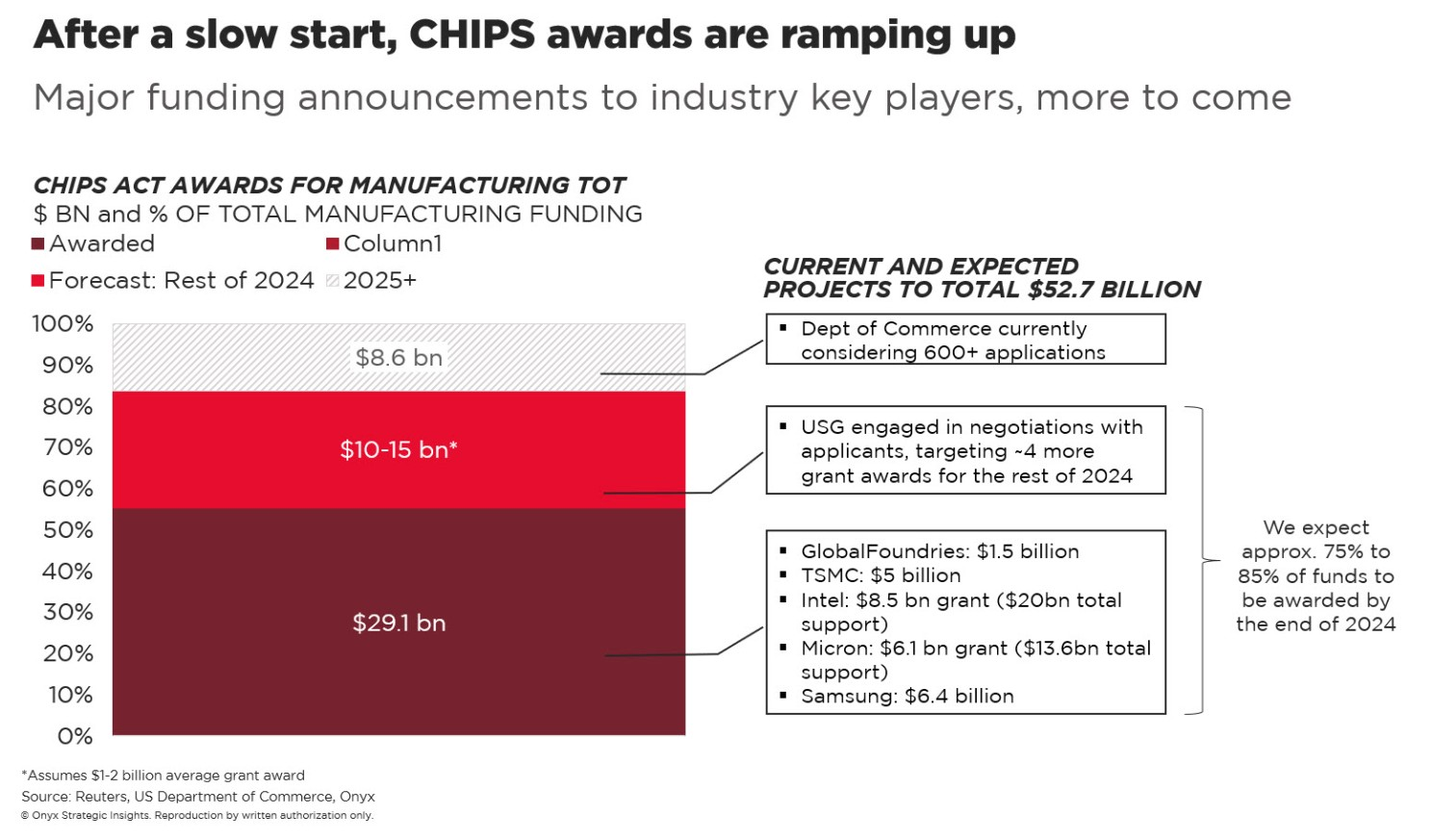
Search our articles
Success of the CHIPS Act Faces Complex Geopolitical Conditions
Key Insights:
- What is happening: Major funding announcements have been made recently under the CHIPS and Science Act, a key piece of US industrial policy intended to expand domestic semiconductor production for national and economic security reasons.
- Why it matters: COVID and geopolitical rivalry have highlighted the reliance of the US on semiconductor manufacturing on Taiwan, in particular. The Biden administration aims to improve supply chain resiliency and security as well as drive economic growth with the CHIPS Act.
- What comes next: Overwhelming interest in funding and the challenging realities of rebuilding a strong US chip industry – including labor force gaps, construction costs, and continued reliance on partners in Asia for certain steps in the value chain – means that a second tranche of funding is a distinct possibility.
Where does CHIPS stand today?
The US Department of Commerce recently announced tranches of funding that will likely constitute the largest disbursements under the CHIPS Act. While these funds represent significant investments, many of the grants are smaller than expected due to overwhelming interest in funding from the program. This will likely result in reduced project scope in many instances.

Recent geopolitical tensions in US-China and China-Taiwan relations as well as the supply chain disruptions of COVID highlighted the risks inherent in the current geographic concentration of production for key semiconductors. For instance, the United States International Trade Commission recently found that the US imports about 44% of its logic chips from Taiwan and production disruptions could lead to a 59% increase in cost to downstream US producers. Additionally, Taiwan is the key supplier of the most advanced chips globally, particularly those used for cutting edge technologies such as generative AI where the US seeks to lead in competition with China. Against this backdrop the CHIPS Act seeks to accomplish three main policy objectives: reduce risk of semiconductor supply chain shocks, improve America’s economic competitiveness, and protect semiconductors from international interference.
While this large-scale industrial policy will achieve moderate success across each of these measures, challenges may force another round of funding or require policy action elsewhere. Challenges largely stem from industry’s cyclical nature, the small number of suppliers and producers in the space, and external or structural factors. These include:
- Heavy segmentation: Semiconductors are not a single market and instead vary by a range of complexity, use-cases, and other factors. CHIPS Act investments aim to improve domestic availability in a variety of markets.
- Industry glut across certain segments: A recent glut of legacy chips has reduced the urgency to build new legacy fabs. The growing use of industrial policy across countries to support domestic chips production could exacerbate oversupply. Market-driven rapid growth in applications for chips will push the cycle forward and could resolve oversupply issues in some segments.
- High construction costs: A booming US construction industry has raised costs and caused delays in the construction of new fabs domestically, eroding the economics of major fab projects.
- Labor force gaps: A lack of skilled workers both in the construction and semiconductor industries raises costs and delays operations. CHIPS provides funding for skills development, but a chronic shortage of STEM workers will continue to weigh on policy goals.
- Opaque supply chains and dependencies: The semiconductor supply chain forms a complex web of suppliers, making it difficult to pinpoint strategic bottlenecks. Known bottlenecks – such as the concentration of testing and packaging facilities in Asia – require ground-up investments that will take significant time and effort to resolve. Others, such as China’s dominance of key raw materials, fall outside the scope of the Act.
- Lack of explicit and measurable policy goals: The significant shifts among semiconductor supply chains globally make nailing down measurable results for the CHIPS Act difficult.
Topics: North America, Industrial

Written by Onyx Strategic Insights

